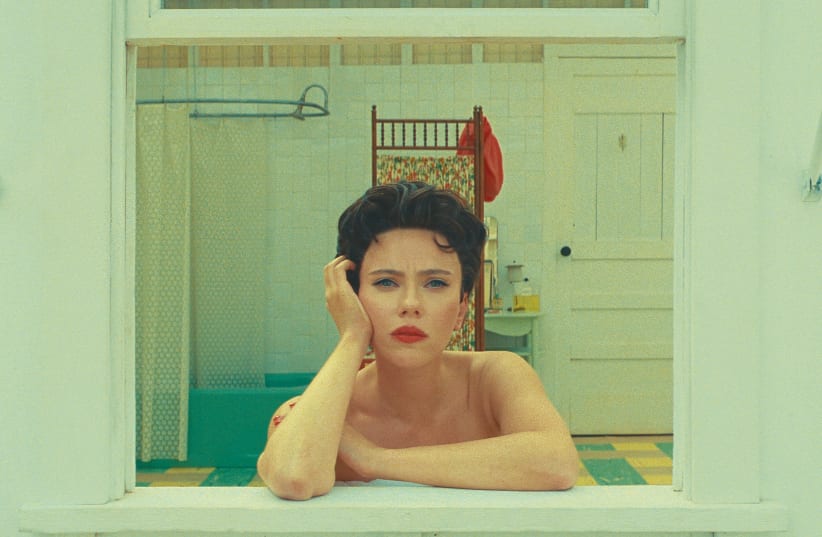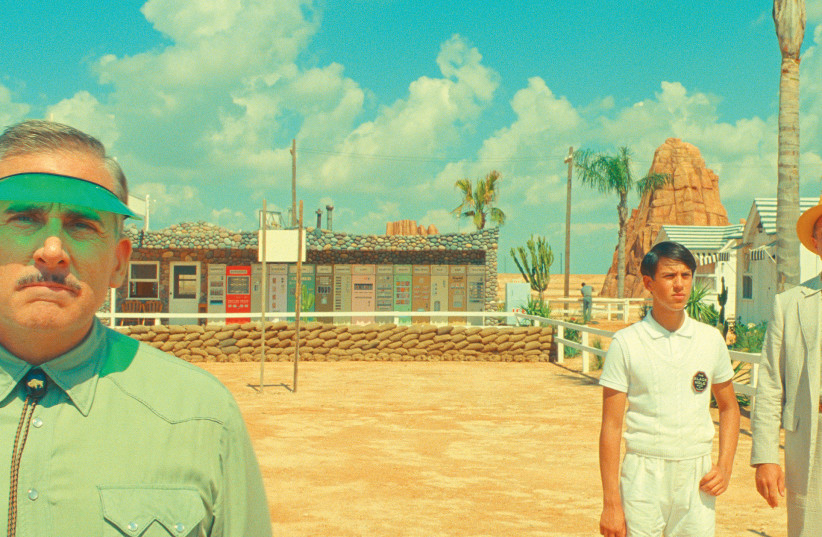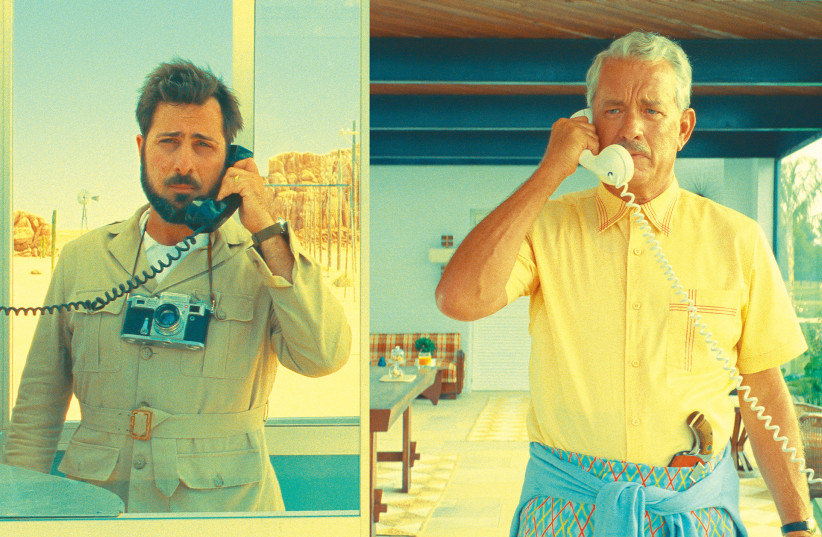Watching Wes Anderson’s latest movie, Asteroid City, which opens throughout Israel on June 22, feels more like taking a test than seeing a film: a test of your appreciation and knowledge of pop-culture artifacts and your willingness to follow dozens of characters down a rabbit-hole of retro cinematic and literary symbols and images.
Loving Wes Anderson has become like a membership badge for a certain kind of cinephile and I have always found much to enjoy in his films, but I’ve never liked test-taking.
While almost every frame of Asteroid City could be exhibited in a museum as an art photo, and although the movie features some of the best actors in the world, among them Tom Hanks, Scarlett Johansson and Jeff Goldblum – I did not truly enjoy more than 10 minutes.
A plot summary of Asteroid City will most likely make it sound more fun than it actually is. Much like The French Dispatch, Anderson’s previous film – in which different storylines riffed off loving parodies of decades of travel writing from The New Yorker magazine – Asteroid City brings together a huge cast of characters in a specific setting. They all visit the titular desert town, which is within shouting distance of an atomic test site – a remote spot where a meteor crashed to earth thousands of years ago – to attend a convention for teen astronomy buffs in the 1950s.
The movie's main plot
The main story, which competes with several other plotlines, is about Augie Steenbeck (Jason Schwartzman), a recently widowed photojournalist who takes his three cute little daughters and gawky adolescent son, Woodrow (Jake Ryan), to the “Junior Stargazers” convention, and is planning to tell them there about their mother’s death. That this premise recalls a more straightforward dramatic film, Grace is Gone, starring John Cusack, serves as a reminder of how much more moving and engrossing that film was.
Tom Hanks, playing Steenbeck’s ornery, wealthy father-in-law, shows up to push him to tell them the bad news. In addition to Woodrow, there are many other awkward adolescents on hand, and their parents include a histrionic Hollywood star, Midge (Scarlett Johansson), who strikes up a friendship and then a relationship with Augie, just as Woodrow falls for Midge’s daughter.
The film features many other characters, among them scientists (one of whom is played by Anderson regular, Tilda Swinton), a motel manager (Steve Carell), a sweet teacher (Maya Hawke of Stranger Things) shepherding her class through the convention and a cowboy (Rupert Friend of Homeland).
Eventually, an alien lands, in front of the entire group, and hangs around long enough to be photographed. This brings various blowhard military personnel, among them a general played by Jeffrey Wright, to Asteroid City to quarantine everyone.
All of this is interwoven with what starts out as a framing device but gradually becomes more central: a black-and-white Playhouse 90-style featurette of sorts that tells of a play about these stargazers being written by a great American writer (Edward Norton).
The play is then directed by a director played by Adrien Brody and with the help of an acting teacher modeled on Lee Strasberg, played by Willem Dafoe. This whole story-around-the-story is narrated with perfect 1950s-style intonation by Bryan Cranston and (although it’s close) I would say that it is the more annoying of the two halves of the film.
Playhouse 90 was a critically acclaimed anthology series of filmed plays created during television’s first golden age in the late 1950s and much of it would look dated and excessively stagey to audiences today. Why we would want to watch scenes of a director of a show in a series like this arguing with his soon-to-be ex or listening to the narrator droning on about the staging of this play is mystifying and that’s where the test-taking comes in: We’re being invited to figure out what all of this is about. If you are bored and don’t really care, clearly, you’ve failed somewhere, since an enormous budget and a coterie of Oscar winners and other respected actors have come together to bring all this to life.
Some of the running jokes are funny, as they always are in Anderson’s movies. The best one is about a vending machine that dispenses martinis and sells tracts of real estate, as well as more ordinary items. But whenever you start to enjoy one moment or character, you are quickly whisked to another before anything much gets going.
The joyless experience of watching Asteroid City inspired me to look back over Anderson’s older films and I realized that while they used stylized acting and archetypal characters to tell their stories, somehow this style allowed us to feel close to the characters. That was Anderson’s magic and that’s why we are still going to his movies. It’s interesting that the Anderson films where the emotion most outweighed any production design or art direction were his first three movies, Bottle Rocket (1996), Rushmore (1998) and The Royal Tenenbaums (2001), which were all co-written with Owen Wilson.
Wilson, who is best known as an actor, was Anderson’s college roommate and has appeared in most of his films. These days, Anderson’s most frequent collaborator on his screenplays is Roman Coppola (Francis Ford Coppola’s son), who is credited with co-writing the story on Asteroid City. I miss Wilson’s contribution. There is more depth, humor and emotion in any five minutes of The Royal Tenenbaums – a timeless ode to dysfunctional families and failed child prodigies – than there is in the entire running time of Asteroid City. With The Royal Tenenbaums and the other early films, the design and other stylistic tics enhanced the story, but they weren’t in place of a story. These collaborations with Wilson were fun and fast-paced. Needless to say, watching them never felt like a test.


